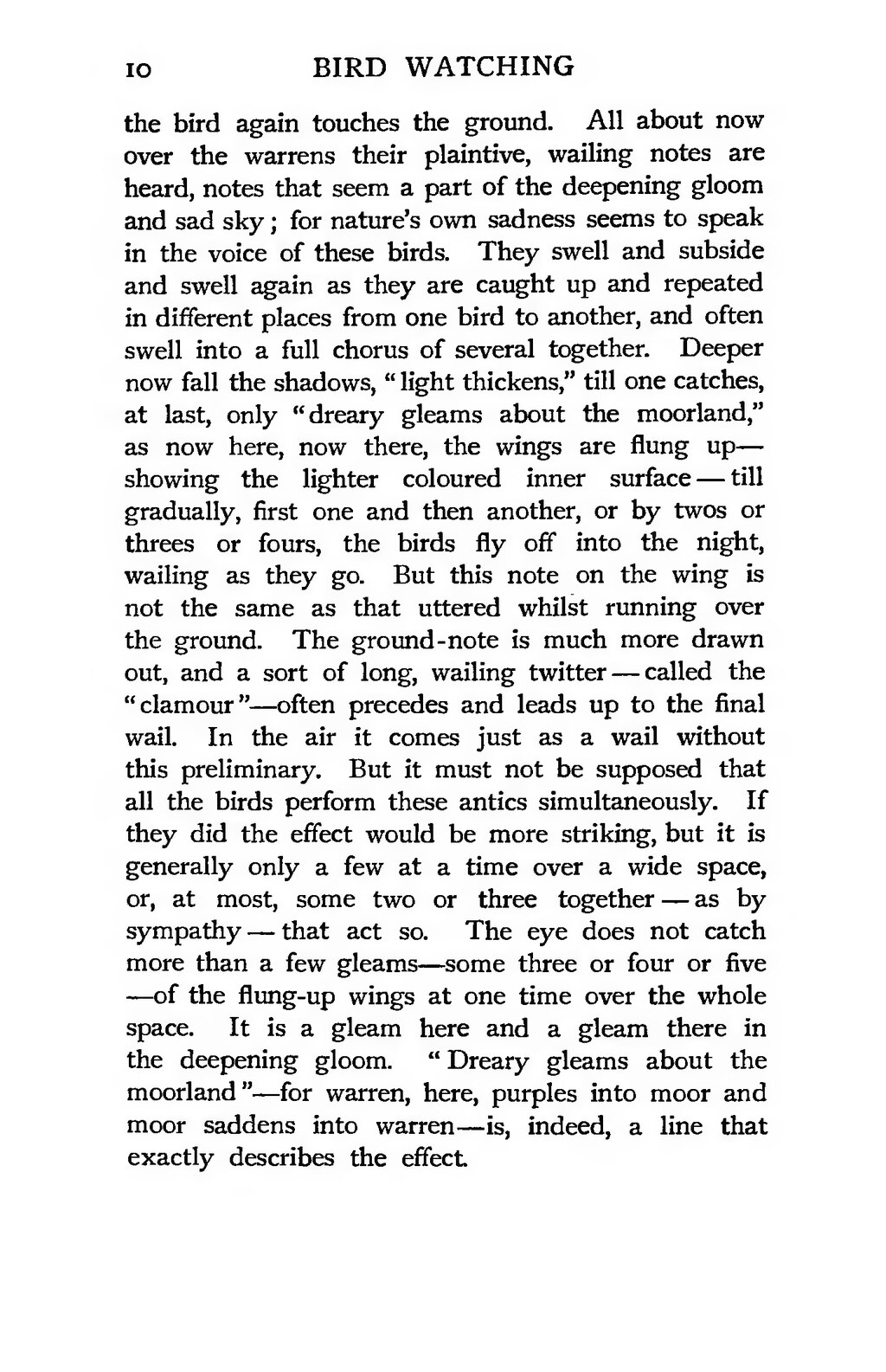the bird again touches the ground. All about now over the warrens their plaintive, wailing notes are heard, notes that seem a part of the deepening gloom and sad sky; for nature's own sadness seems to speak in the voice of these birds. They swell and subside and swell again as they are caught up and repeated in different places from one bird to another, and often swell into a full chorus of several together. Deeper now fall the shadows, "light thickens," till one catches, at last, only "dreary gleams about the moorland," as now here, now there, the wings are flung up—showing the lighter coloured inner surface—till gradually, first one and then another, or by twos or threes or fours, the birds fly off into the night, wailing as they go. But this note on the wing is not the same as that uttered whilst running over the ground. The ground-note is much more drawn out, and a sort of long, wailing twitter—called the "clamour"—often precedes and leads up to the final wail. In the air it comes just as a wail without this preliminary. But it must not be supposed that all the birds perform these antics simultaneously. If they did the effect would be more striking, but it is generally only a few at a time over a wide space, or, at most, some two or three together—as by sympathy—that act so. The eye does not catch more than a few gleams—some three or four or five—of the flung-up wings at one time over the whole space. It is a gleam here and a gleam there in the deepening gloom. "Dreary gleams about the moorland"—for warren, here, purples into moor and moor saddens into warren—is, indeed, a line that exactly describes the effect.
